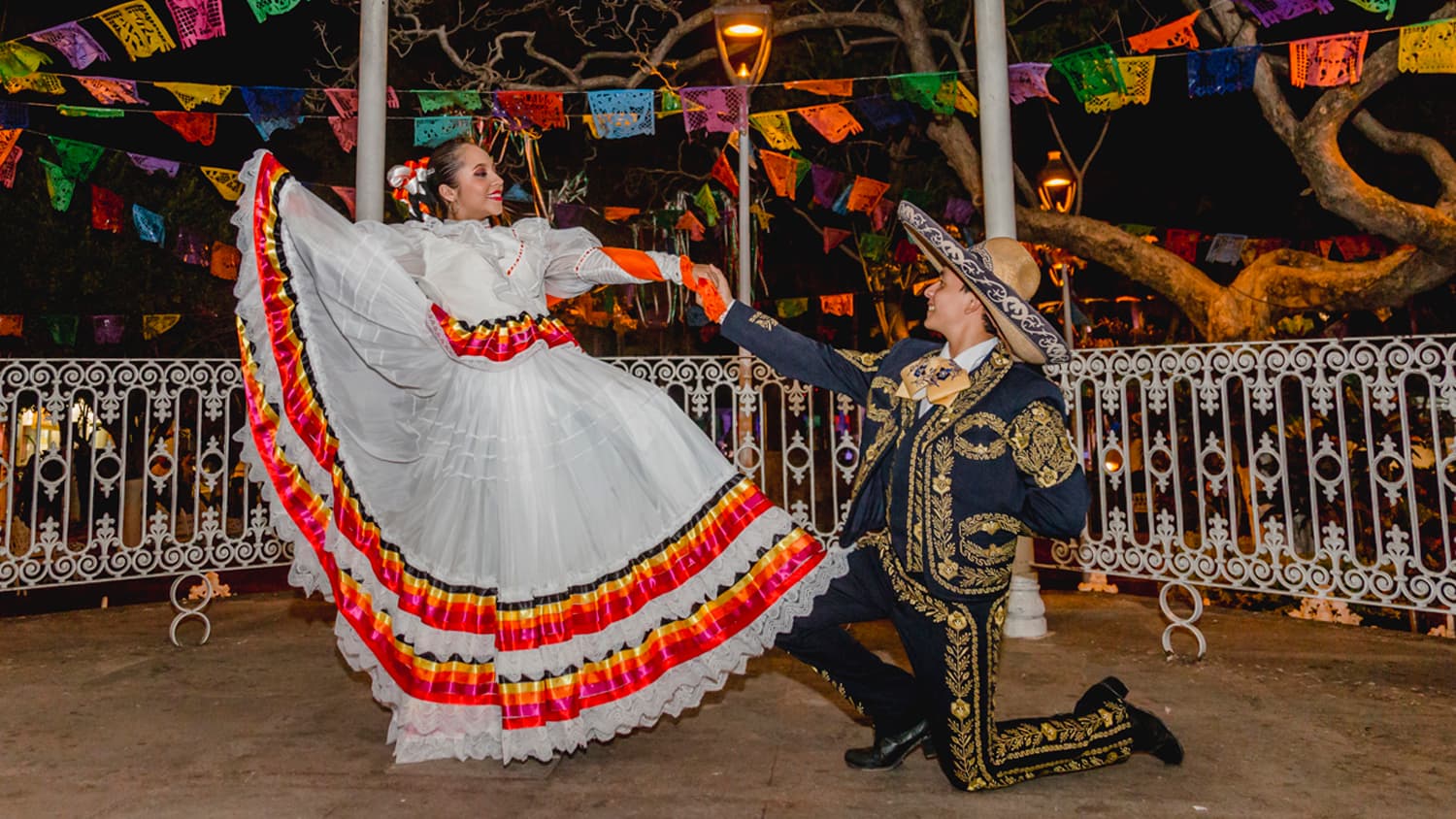Jarabe Tapatío: Features and Costumes

Mexico’s various folk dances are a reflection of the country’s diverse cultural richness. With distinguishing features determined by their place of origin, the vast majority of these dances bear traces of European and indigenous influences. The dancers’ regional costumes and the musical accompaniment, often live, contribute to making these performances colorful, festive and entertaining.
Fortunately, visitors to Puerto Vallarta with an appetite for Mexican culture have access to assorted groups presenting many of Mexico’s most popular traditional dances.
The features and typical costumes of the Jarabe Tapatío are following presented.
Jarabe Tapatío (The National Dance of Mexico)
Better known in the USA as the Mexican hat dance, the choreography represents a man’s courtship of a woman at a party. At first, she rejects his attentions, but ultimately accepts his overtures. When the man sets his charro (Mexican horseman) hat on the floor, they both dance around it. At the end of the dance, the woman picks up the hat and covers both their faces with it, implying that they are sealing their commitment with a kiss.
Costumes
- Woman
Everything she wears is very colorful: a long, full skirt and a long-sleeved blouse decorated with ribbons, her braided hair adorned with wide ribbons in typical Mexican colors. She wears mid-calf boots.
- Man
He wears the traditional charro (Mexican horseman) suit, usually black, with buttons and silver embellishments. Under the jacket he wears a white shirt accented with a brightly colored neckerchief tied in a bow. Both the hat and boots must be color-coordinated with the suit. A belt with intricately woven designs is essential.
Although there are several factors to consider when observing a dance, the focus should be on the sound of the tapping, the manipulation of the skirt, the postures of both dancers and, of course, the precise execution of each of the steps.



Comments